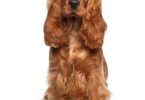The Bulldog: A Symbol of Tenacity and Affectionate Charm
The Bulldog, with its distinctive wrinkled face, pushed-in nose, and muscular build, stands as an iconic symbol of tenacity and charm. Known for its unique appearance and endearing personality, the Bulldog has earned a place in the hearts of dog enthusiasts worldwide. In this exploration, we delve into the history, characteristics, and the delightful qualities that define the Bulldog.
Origin and History
The Bulldog’s origins can be traced back to medieval England, where it was originally bred for bull-baiting—a popular sport in which the dog would engage with a tethered bull, showcasing its strength, agility, and determination. The breed’s development involved crossing mastiffs with smaller, more agile breeds, resulting in a dog with the distinctive traits that characterize the modern Bulldog.
Fortunately, bull-baiting was outlawed in the 19th century, leading to a shift in the Bulldog’s purpose. Breeders focused on cultivating the breed’s affectionate nature and sought to eliminate aggression. Over time, the Bulldog transformed from a fierce competitor in the bull-baiting ring to a beloved companion with a gentle disposition.
Physical Characteristics
The Bulldog is a medium-sized, muscular dog with a distinctive appearance. Its head is broad and square, adorned with loose, wrinkled skin and a pushed-in nose. The breed’s prominent undershot jaw gives the Bulldog its characteristic “sourmug” expression. Bulldogs have a smooth, short coat that comes in various colors, including brindle, fawn, and white with patches.
One of the most notable features of the Bulldog is its compact and sturdy build. Despite its muscular frame, Bulldogs are known for their distinctive waddle when they walk, adding to their charm and unique character.
Temperament and Personality
Bulldogs are often described as docile, gentle, and affectionate. Despite their historical connection to bull-baiting, modern Bulldogs are known for their calm demeanor and make excellent companions for families and individuals alike. They are particularly good with children and are known to form strong bonds with their human family members.
While Bulldogs can be somewhat stubborn, their affectionate nature makes them highly endearing. They often seek human companionship and thrive in environments where they can be close to their owners. Bulldogs are not typically aggressive and are known for their tolerance, making them suitable for various living situations.
Intelligence and Trainability
Bulldogs are intelligent dogs with a bit of independent streak. While they may not be as eager to please as some other breeds, they are certainly trainable with patience and positive reinforcement. Early socialization and consistent, gentle training are essential to shape their behavior and ensure they grow into well-mannered companions.
Their relatively low energy levels make Bulldogs well-suited for apartment living, but they still require regular walks and playtime to keep them physically and mentally stimulated. Engaging in training sessions that involve positive reinforcement and rewards can make the learning process enjoyable for both the owner and the Bulldog.
Exercise Needs
Despite their muscular build, Bulldogs are not overly active dogs. They have a moderate exercise requirement and are content with daily walks, short play sessions, and some indoor activities. Due to their unique respiratory anatomy, Bulldogs can be prone to overheating, so it’s essential to avoid strenuous exercise in hot weather.
Bulldogs’ love for lounging and relaxation makes them well-suited for individuals or families looking for a canine companion that is not excessively demanding in terms of exercise but still enjoys spending quality time with its human family members.
Health Considerations
The Bulldog, like many purebred dogs, is susceptible to certain health issues. One of the most commonly known concerns is brachycephalic airway syndrome, which is associated with their distinctive pushed-in nose. This can lead to breathing difficulties, especially in hot weather. Regular veterinary check-ups and maintaining a healthy weight are crucial for the overall well-being of Bulldogs.
Skin issues, joint problems, and dental care are other aspects that require attention in Bulldog care. Regular cleaning of the facial wrinkles and ears, as well as providing a balanced diet, can contribute to their health and comfort.
Conclusion
In conclusion, the Bulldog is a breed that has undergone a remarkable transformation from its historical role in bull-baiting to its current status as a beloved companion. With its distinctive appearance, affectionate personality, and unique charm, the Bulldog has found its place as a symbol of tenacity and warmth.
Whether lounging on the couch with its human family, strolling along on a leisurely walk, or simply providing affectionate companionship, the Bulldog continues to capture the hearts of dog enthusiasts. Its resilient spirit and loving nature make the Bulldog a delightful addition to households seeking a loyal and endearing canine companion with a character as distinctive as its appearance.






